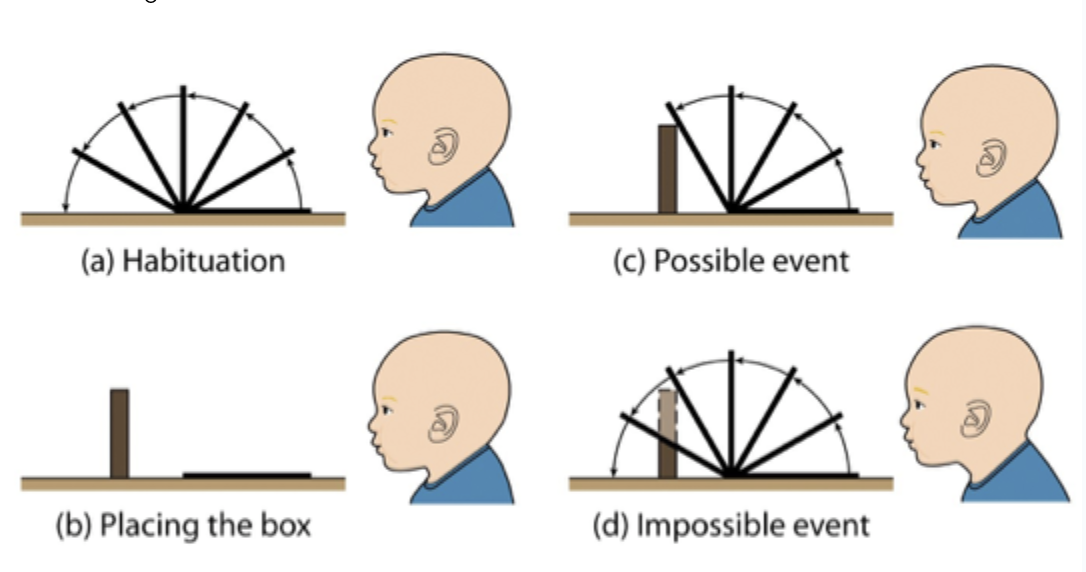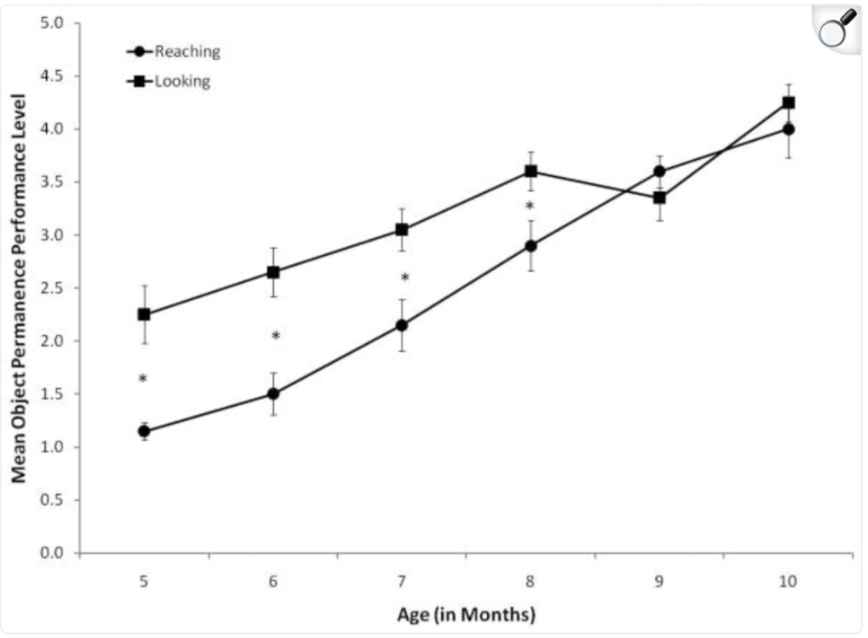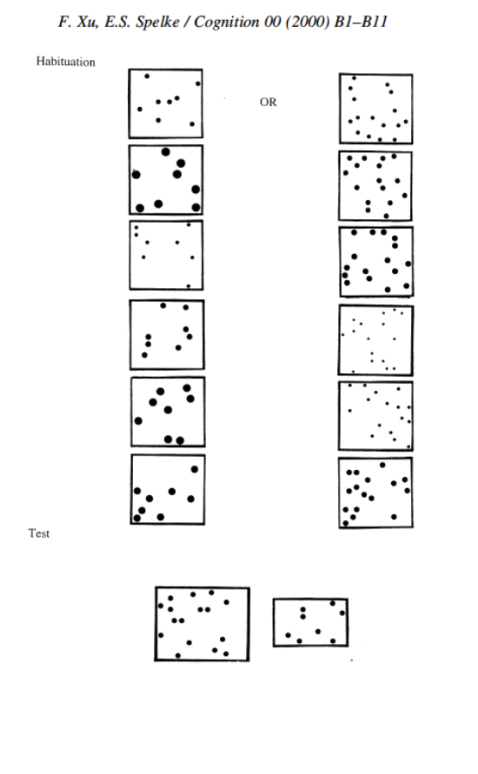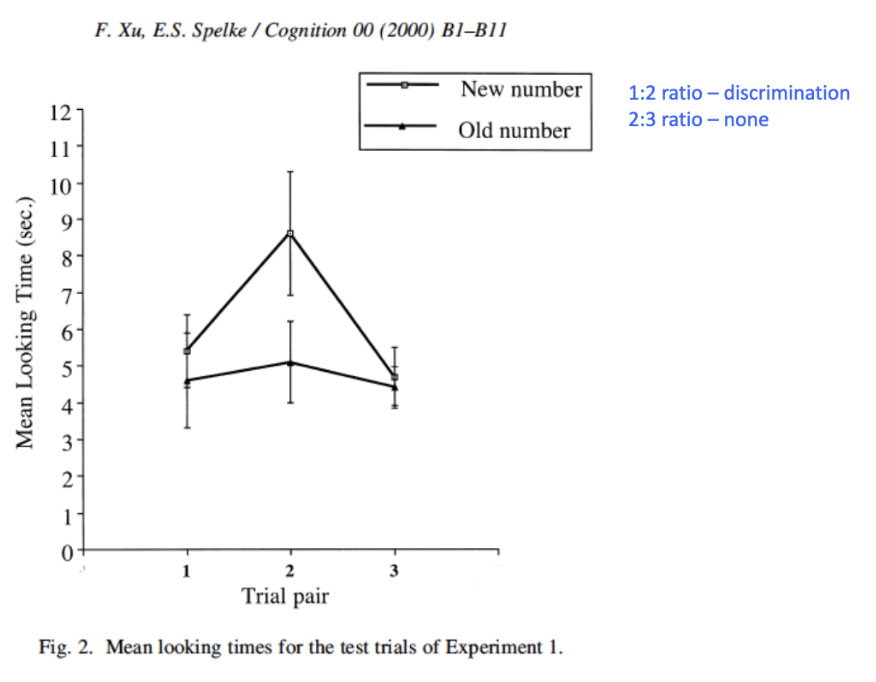Developmental Psychology Midterm II
1/54
There's no tags or description
Looks like no tags are added yet.
Name | Mastery | Learn | Test | Matching | Spaced |
|---|
No study sessions yet.
55 Terms
Constructivism
Piaget’s theoretical approach. It is the idea that the child plays an active role in constructing their own knowledge.
Cognition
The knowing and the process of acquiring knowledge. It includes attention, perception, learning, thinking, and memory.
Cognitive Development
The study of changes in knowledge that are age-related. Children are seen as active, learning many important lessons on their own, and are intrinsically motivated to learn.
Intelligence
A basic life function that enables an organism to adapt to its environment and change its brain to match whatever environment it is born into.
What is intelligence?
It comes in the form of schemes, organized patterns of thought that change with age from motor-based to idea-based, and reflect a match between thought and environment known as cognitive equilibrium.

Cognitive Equilibrium
Everything is copacetic. A match between thought processes and one’s environment, when what is believed to be true about the world is true.
What happens when there is a mismatch between thought and environment?
That is where learning happens. When there is a mismatch, it pushes adaptation and organization of what is in the mind.
Adaptation
The tendency to respond to the demands of the environment to meet one’s goals.
Organization
The tendency to integrate particular observations into coherent knowledge.
Forms of adaptation
Assimilation and accommodation
Assimilation
The process by which people translate incoming information into a form they can understand. It involves fitting new information into an existing schema and adjusting understanding without changing the original framework.
Ex) This makes knowledge more accurate, such as recognizing a new kind of dog as still being a dog.
Accomodation
The process by which people adapt their current knowledge structure in response to new experiences that do not fit existing schemas. It occurs when information violates what is already known.
Ex) When a child thinks a furry animal is a dog but learns it meows and is actually a cat, requiring them to adjust their concept of “dog.”
How do you gain intelligence?
Intelligence develops through a continuous cycle of equilibrium, assimilation, accommodation, and organization. Each new equilibrium represents a smarter, more accurate understanding of reality.
Piaget’s view of learning
Children are active participants in their development and build their knowledge by acting on objects to understand their properties. They are constructivists who experience universal changes in intellectual growth, using a small set of mental ingredients to create increasingly complex understanding.
Invariant developmental sequence
Cognitive development occurs in a fixed, hierarchical order where each stage builds on the one before it. Development moves from simple motor actions to abstract thinking.
Stage 1: Sensorimotor Stage (0–2 years)
Characterized by circular reactions, intentional behaviors, and early problem solving. The goal is to move from behavioral schemas to symbolic understanding.
Stage 2: Preoperational Stage (2–7 years)
Symbolic thought becomes available, but children cannot yet perform mental operations. Magical thinking decreases during this stage.
Stage 3: Concrete Operational Stage (7–11 years)
Children become logical, flexible, and organized thinkers but can only apply these operations to real or concrete information.
Stage 4: Formal Operational Stage (12 years and beyond)
Thinking becomes abstract and hypothetical, shifting from operations on reality to operations on ideas themselves.
Three types of schemes
There are three main types: behavioral, symbolic, and operational. Each represents a different way of organizing and expressing knowledge.
Behavioral schema
Patterns of behavior used to represent an experience. These are the earliest and simplest forms of knowledge, expressed through motor actions.
Ex) when an infant repeatedly drops a set of keys and waits for someone to pick them up, they are demonstrating an understanding that objects fall and will be retrieved.
Symbolic schema
Internal mental symbols are used to represent an experience. These allow thinking without direct action, such as reading or understanding numbers, or picturing an object in one’s head.
Operational Schema
Internal mental activities are performed on objects of thought. These act on symbolic schemas, like verbs applied to nouns in the mind.
Ex) Imagining smushing a banana and then putting it back in its peel demonstrates understanding of what is and isn’t possible.
Object permanence
Knowing that objects continue to exist even when they cannot be seen. This understanding develops during the sensorimotor period.
Ex) Infants enjoy peek-a-boo because they do not remember that your face still exists when it is hidden, so its reappearance feels surprising.
The A-not-B error
When presented with two wells, A and B, an infant repeatedly searches in A even after watching a toy be hidden in B. Infants aged 8–12 months make this error because they cannot hold the image of the object in their mind and only search where they last found it. This shows that they do not yet understand that objects exist independently of their immediate experience.

Renée Baillargeon’s research
Demonstrated that infants can recognize impossible events, revealing an early sense of object permanence.
Ex) Infants were shown a rotating screen that should have been blocked by a hidden object. When the screen appeared to pass through the object, infants looked longer, showing awareness that the event was impossible. Even at 3.5 months old, infants displayed this understanding.
Cuevas & Bell reaching experiment
Measured infants’ ability to locate hidden objects using both reaching and eye movements. The x-axis represented different ages, and the y-axis represented mean object permanence performance. Circles showed reaching accuracy, and squares showed where infants looked.
Ex) Younger infants often reached incorrectly to well A but looked toward the correct well B, showing they knew the object’s location even if their actions did not match.

Symbolic thinking
Includes language, pretend play, and drawing. Language relies on symbols, pretend play involves representing real activities through imagination, and drawing transitions from random scribbles to purposeful representations. This marks a major cognitive jump that connects the child more closely to older age groups.
Centration
The tendency to focus on one perceptually striking feature of an object or event while ignoring others.
Ex) In the liquid conservation task, a child focuses on height but ignores width, concluding that the taller glass has more liquid.
Types of centration
Egocentrism and failure of conservation
Egocentrism
A type of centration where children perceive the world solely from their own point of view. Their attention is centered on themselves and their own perspective.
Conservation and reversibility
Children in this stage fail to grasp that changing an object’s appearance does not change its essential properties. They struggle with reversibility, focusing on one dimension at a time and missing relationships between variables like weight and distance.
Inhelder and Piaget’s Pendulum Problem
A task designed to determine how children test variables like string length, weight, and dropping point to see what affects how long a pendulum takes to swing back and forth.
Ex) Children under age 12 often perform unsystematic experiments and draw incorrect conclusions because they fail to isolate one variable at a time.
Differences in Problem Solving for Piaget
Older children and adults in the formal operational stage test all logical possibilities systematically.
Ex) When combining four colors (white, red, blue, yellow), a concrete thinker lists only simple pairs like W+R or R+B, while a formal thinker includes all possible combinations, such as W+R+B+Y.
Piaget’s Educational Implications
Teaching should align with the child’s stage of cognitive development. Children learn best through physical and mental interaction with their environment, supported by activities and questions that make them reflect on their learning.
Critiques of Piaget’s Theory
Piaget’s stage model portrays children’s thinking as more consistent than it truly is. Research shows infants and young children are more cognitively advanced than he proposed, and his theory underestimates the role of the social world in cognitive growth.
Core Knowledge Theory
Proposes that some knowledge is innate and that children are born with certain cognitive abilities that are more advanced than previously believed. These core domains of though help children quickly grasp new related information and are linked to evolutionary survival.
Core domains of thought (CKT)
Include face processing, physical understanding (objects and effects), numerosity, language, and psychological knowledge such as morality. Each domain represents specific, evolutionarily based knowledge that supports survival and learning.
Numerosity
Refers to an innate “number sense” allowing humans to represent quantities before verbal counting develops. This sense is present in infancy and shared with many animals.
Spelke’s Numerosity Experiments
Exp 1: Infants were shown displays of 8 and 16 to test number discrimination. They looked longer at the new number (16) after habituation to 8, showing they could discriminate large differences (1:2 ratio)
Exp 2: When infants were tested on 8 vs. 12 dots (2:3 ratio), infants struggled to discriminate between the sets, suggesting that they can only distinguish numbers that are far apart in ratio


Two Number Systems (CKT)
Infants and humans use two distinct systems for representing numbers:
A nonverbal, innate system for approximate numerosity shared with nonhuman animals.
A verbal system fro exact numerosity, unique to humans, that emerges around age 3 with counting
Puppet show experiment
Infants watched a scene with one character helping someone and another hindering the same character up a hill. After repeated viewing, about 80% of infants chose the helpful character, suggesting an early, core sense of moral understanding.
Sociocultural approaches
Emphasize the role of other people and cultural context in shaping children’s development. Learning happens through social interaction and participtation in shared cultural activities.
Guided Participation (Sociocultural approach)
A process in which more knowledgeable individuals organize activities so that less experienced individuals can engage at a higher level than they could alone.
Ex) A child attempting a task independently may plateau, but with a teacher’s support, the child can perform at a higher level.
Cultural Tools
The many products of human ingenuity (such as paper, pencils, and laptops)that enhance thinking and learning. Classrooms themselves are cultural inventions that allow teacher and student to work together within a shared sociocultural context.
Lev Vygotsky (1896)
Founder of the sociocultural approach to child development. He viewed children as social beings who develop through interaction with others who are eager to help them learn skills and understanding.
Social nature of learning (Sociocultural approach)
Children are social beings first. Knowledge is socially transmitted, and cognitive development differs across cultures depending on environment, available tools, and social practices.
Cultural influence on thinking (Sociocultural Approach)
How and what people think is shaped by their culture. Because each culture offers different tools, languages, and social norms, cognitive development varies from one culture to another.
View of development (Sociocultural Approach)
This approach sees development as continuous, with gradual, quantitative changes rather than distinct stages. Humans are unique for their strong tendency to teach one another and learn socially.
Vygotsky’s Core Theory
Children acquire their culture’s values, beliefs, and problem-solving strategies through collaborative dialogues with more knowledgeable members of society.
Vygotsky vs. Piaget
Vygotsky argued that cognitive development stems from social interaction and guided learning within the zone of proximal development, while Piaget believed it arises from a child’s independent exploration and construction of knowledge.
Developmental processes across cultures
Sociocultural theorists believe that many processes that produce development, such as guided participation, are universal across societies. However, the specific content of what children learn differs by culture, shaping how they think.
Mental functions & Culture (Sociocultural approach)
Young infants start with basic functions such as attention, sensation, perception, and memory. Humans are not born as blank slates but become more complex over time. Culture transforms basic mental processes into higher mental functions through tools of intellectual adaptation.
Memory Example
In literate societies, writing serves as a tool to enhance memory; people may write things down to remember them. In cultures without writing systems, other strategies, such as tying knots in string, can serve the same purpose. The tools available in a culture determine how inborn processes are developed into more advanced forms of thinking.
Cultural influence on mathematical thinking
Differences in language structure affect how children learn numbers.
Ex) In English, words for “teens” (11–19) do not follow a base-10 system and must be memorized, while Chinese numerals directly reflect the base-10 structure (11 = ten-one, 21 = two ten-one).